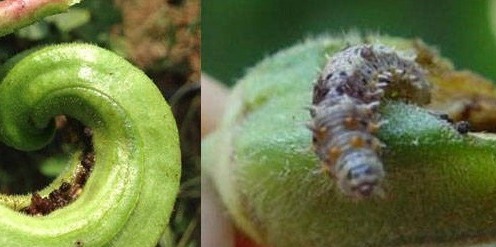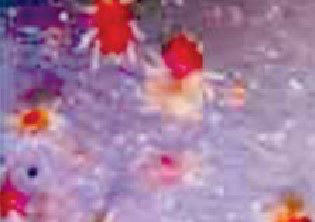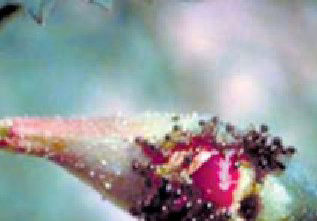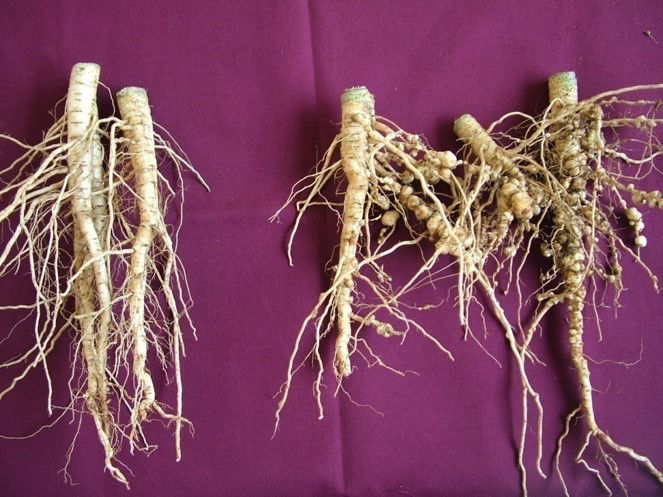
Shoot and Fruit borer
• Apply neem cake @ 250 kg/ha to soil immediately after germination and repeat it after 30 days.
• Collect and destroy the affected fruits and stems.
• Spray cymbush @ 0.5 ml/litre of water to control shoot borer, before flowering.
• At flowering stage, spray Sevin 50 wp@ 4g/litre of water to control fruit borer.

Leaf hopper
Symptoms:
Nymphs and adults suck sap usually from the under surface of the leaves and inject toxins causing curling of leaf edges and leaves turn red or brown called as ‘Hopper Burn’. The leaves dry up and shed
Management :
In the initial stages of crop (before flowering) @ 25 DAS, spray imidacloprid (0.3 ml/l) for managing hoppers. Then avoid insecticides
Spray neem or pongamia soaps @ 1% or pulverized neem seed powder extract (NSPE) 4%. Give the lower surface of the leaves thorough spray, as the hoppers are generally found there.

Aphids
Symptoms
Aphids can attain very high densities on young plant tissue, causing water stress, wilting, and reduced growth rate of the plant
Management : Spray PNSPE (4 %) or Acetamiprid (0.15g/l) or Imidacloprid

Red spider mites
The nymph and adults are red in color. Its infestation is severe in dry and warm atmosphere. The nymph and adult suck the cell saps from under surface of the leaf and ultimately cause defoliation.
The leaf dried and dropped away incase of severe infestation. Colonies of red mites are found feeding on ventral surface of leaves under protective cover of fine silken webs, resulting in yellow spots on dorsal surface of leaves

Ants:
Ants can be very destructive to okra pods. Ants feed on the moisture and sugar content of okra. These so cause discoloration or distortion of plant
Pre-coat seeds with biopesticide before sowing.
• Add biopesticide Pseudomonas fluorescens at 20 ml/kg or 20 g/kg seed.
• Enrichment of FYM with bio-pesticides: Mix two kg each of Paecilomyces lilacinus, Pseudomonas fluorescens and Trichoderma harzianum / T. viride in one ton of FYM and leave it in shade for 15 days at 25 – 30% moisture for multiplication of beneficial microbes.
• Soil has to be incorporated with 20 – 30 tons of FYM enriched with bio-pesticides before sowing.
• Enrich neem cake with bio-pesticides: Mix two kg of each of Paecilomyces lilacinus, Pseudomonas fluorescens and Trichoderma harzianum / T. viride in one ton of neem cake and leave it in shade for 15 days at 25 – 30% moisture for multiplication of beneficial microbes.
• Apply neem cake enriched with biopesticides in standing crop at 50 g/ m2 once in a month.
• Mix 20 kg of enriched neem cake mixture in 200 lit water, leave it for two days and this can be used for drenching beds @ 2 lit/ m2 or filter it thoroughly and use it for spraying the foliage or sending along the drip, once in a month.
• Spray Arka Plant Growth Promoter and Yield Enhancer (Pseudomonas fluorescens + Trichoderma harzianum) at 5 ml or 5g/lit, once in a month.
Or send along the drip, Arka Plant Growth Promoter and Yield Enhancer (Pseudomonas fluorescens + Trichoderma harzianum) at 5 ml or 5g/lit, once in a month.
